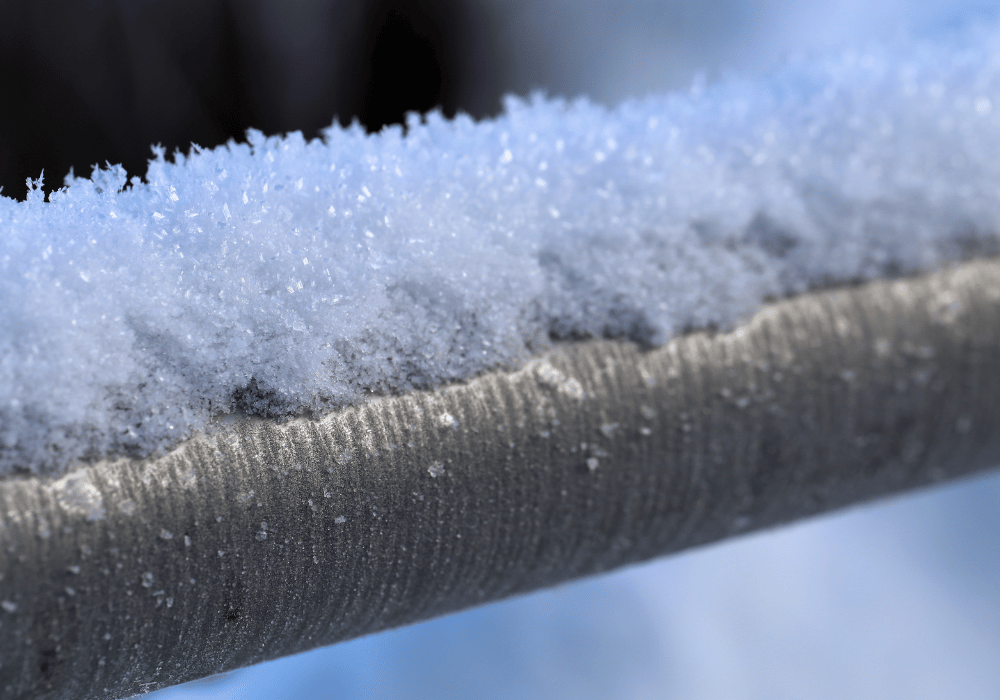Winter can be a delightful season, with snow-covered landscapes and cozy nights by the fire. But behind the beauty lurks a menace that homeowners dread—frozen pipes. When temperatures plummet, water in your pipes can freeze, leading to blockages or even burst pipes. This can result in expensive repairs and a lot of hassle. If you’re wondering how to protect your pipes from freezing, you’ve come to the right place. This post is designed for homeowners who want practical solutions to keep their plumbing safe during winter.
We’ll explore why pipes freeze, how to prevent it, and what to do if it happens. By the end, you’ll be armed with the knowledge to safeguard your home against the harshest of winter conditions.
Why Do Pipes Freeze?
The Science Behind Freezing Pipes
When temperatures dip below 32°F (0°C), the water inside your pipes can freeze. Water expands as it turns to ice, creating pressure that can cause the pipe to burst. This is most common in unheated areas like basements, attics, and garages.
Common Culprits
Pipes located on exterior walls or exposed to cold air are particularly vulnerable. Improper insulation is another major factor. Even a small opening that lets in a draft can be enough to freeze an unprotected pipe.
Consequences of Frozen Pipes
Frozen pipes not only disrupt your water supply but can also lead to significant damage. Burst pipes can flood your home, ruin floors and walls, and cost thousands in repairs.
Insulate Your Pipes
Types of Insulation
Start by insulating your pipes with foam rubber or fiberglass sleeves. These materials can be found at most hardware stores and are relatively easy to install.
DIY Insulation Tips
Measure your pipes and cut the insulation to fit. Secure it with duct tape or zip ties. Make sure there are no gaps where cold air could get in.
Professional Help
If you’re not comfortable doing it yourself, hire a professional plumber. They can ensure that all vulnerable pipes are adequately insulated.
Keep the Heat On
Consistent Temperature
Maintain a consistent temperature in your home, even if you’re away. Set your thermostat to at least 55°F (13°C).
Space Heaters
In particularly vulnerable areas, consider using space heaters. These can provide extra warmth to prevent freezing.
Heating Cables
For extreme conditions, heating cables can be wrapped around your pipes. These cables use electricity to generate heat and keep your pipes warm.
Seal Off Drafts
Identify Drafty Areas
Inspect your home for any places where cold air can enter. Common culprits include cracks in walls, gaps around windows and doors, and openings for cables and pipes.
Seal Them Up
Use caulk or weatherstripping to seal these areas. For larger gaps, expanding spray foam can be very effective.
Regular Maintenance
Make it a habit to inspect and seal drafts every fall. This not only protects your pipes but also improves your home’s overall energy efficiency.
Keep Water Flowing
Drip Your Faucets
Allowing a small trickle of water to flow through your faucets can prevent freezing. This is particularly important for pipes that run along exterior walls.
Open Cabinet Doors
Open the doors to cabinets where sinks are located. This allows warm air to circulate around the pipes.
Run Water During Cold Spells
If a severe cold spell is forecasted, run water through the pipes periodically. Even a small trickle can prevent freezing.
Install Frost-Proof Faucets
What Are Frost-Proof Faucets?
Frost-proof faucets are designed to shut off the water supply further back from the spout, where it’s warmer. This reduces the risk of freezing.
Installation Tips
These can be installed by a plumber or as a DIY project if you’re handy. Make sure to follow the manufacturer’s instructions carefully.
Benefits
Besides protecting your pipes, frost-proof faucets can also save you money on repairs and water damage.
Use Pipe Heating Tape
What Is Heating Tape?
Heating tape is an electrical device that can be wrapped around pipes to prevent freezing. It’s especially useful for pipes that are difficult to insulate or protect in other ways.
Installation
Follow the manufacturer’s guidelines for installation. Make sure the tape is suitable for your type of pipes—plastic pipes require different tape than metal ones.
Safety Precautions
Always use heating tape that has been rated for safety. Avoid wrapping it too tightly, as this can cause overheating.
Emergency Measures
Thawing Frozen Pipes
If your pipes do freeze, act quickly. Turn off the main water supply and use a hairdryer or heat lamp to thaw the pipe. Never use an open flame.
Call a Professional
If you’re unable to thaw the pipe or if it has burst, call a plumber immediately. They can safely handle the situation and make necessary repairs.
Preventative Actions
Once you’ve dealt with a frozen pipe, take steps to prevent it from happening again. This might include additional insulation or sealing off drafts.
Monitor Weather Reports
Stay Informed
Keep an eye on weather forecasts, especially during winter months. Knowing when a cold snap is coming can give you time to prepare.
Alerts and Notifications
Sign up for weather alerts on your phone. Many apps can notify you of extreme weather conditions.
Proactive Measures
When a cold snap is forecasted, take extra precautions. Drip your faucets, open cabinet doors, and ensure your home is adequately heated.
Professional Inspections
Annual Check-Ups
Have a professional inspect your plumbing system at least once a year. They can identify vulnerable areas and recommend solutions.
Winterizing Your Home
Ask your plumber about winterizing options. This can include everything from additional insulation to specialized heating systems for your pipes.
Peace of Mind
A professional inspection provides peace of mind, knowing that your home is well-protected against winter’s worst.
Frozen pipes are more than just an inconvenience—they can cause significant damage and costly repairs. By taking proactive measures, you can protect your home and avoid the headache of dealing with frozen or burst pipes. From insulation and heating cables to keeping a steady flow of water, there are many strategies you can implement.
Remember, prevention is always better than cure. Take the time to prepare your home for winter, and you’ll enjoy a worry-free season. For more tips and professional advice, consider booking a consultation with a plumbing expert.

